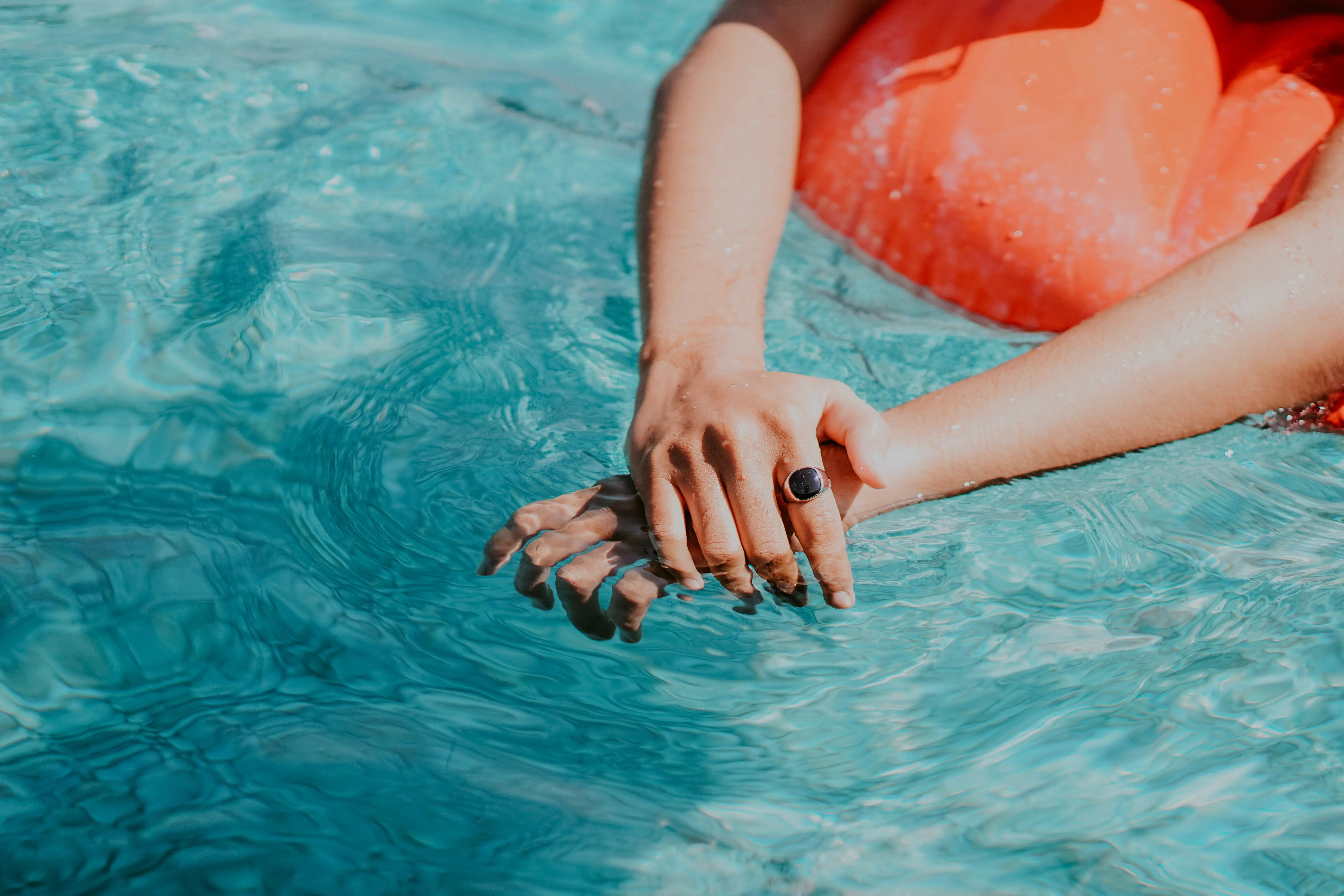Chlorine is the most widely used disinfectant in the pool by far. It’s very effective, cheap, and appropriate. Even so-called “salt” pools use chlorine produced from salt. We will see different ways to raise the chlorine level in a swimming pool when it is too low or even at 0.
Which chlorine to measure: active, free, combined, or total?
The active chlorine allows the water to be disinfected from organic matter such as sweat, insects, or leaves. Active chlorine is released from the free chlorine present in the water. It is released depending on the water’s pH, temperature, and hardness. Combined chlorine is useless chlorine, which neutralizes organic matter. Total chlorine is combined chlorine + free chlorine.
What interests us is, therefore, the active chlorine. But it cannot be measured directly. (more information on active, free, and redox chlorine here (Coming Soon))
Two measurements can be used to give an indication:
- Free chlorine, which is supposed to generate active chlorine under the right pH conditions
- ORP, indicates the degree of water disinfection, therefore, the presence of active chlorine.
Free chlorine too low, or RedOx too much, what to do?
In a pool using stabilizer (more info on pool stabilizer here (Coming Soon)), you must have at least 2mg/L of free chlorine and a pH below 7.6.
The active chlorine content can be determined with an equivalence table, considering the pH in a pool that does not use a stabilizer. Obtaining active chlorine of at least 0.4mg/L is necessary.
With a RedOx measurement, you must have a degree of disinfection of at least 650.
When Free Chlorine or RedOx is too low, chlorine must be added to the pool.
How to Add Chlorine to the Pool
In the pool, chlorine is used from 3 sources:
- chlorine tablets
- liquid chlorine
- salt
Add chlorine tablets to the pool
The chlorine tablet is the most commonly used product to raise the chlorine level in the pool when it is too low. It’s simple to handle, easy to store, it’s practical.
The chlorine tablet will slowly melt into the pool water. It can take more than a week to dissolve fully.
The chlorine tablet is to be put in the pool skimmer. You can use a floating chlorinator if you don’t have a skimmer.
Finally, you can install a chlorinator on the pipes. It makes it possible to store several tablets and dissolve them one after the other.
Unstabilized Chlorine Tablet vs. Multifunction Tablet
It is tempting to always choose a multifunctional tablet. After all, it does more: stabilizer, anti-algae, flocculant, clarifying, etc. It is possible to use some sometimes, but be very careful with the surplus of stabilizer.
The stabilizer never disappears from the pool, and the pool will be saturated by dint of using tablets containing stabilizer. The chlorine no longer works in a pool saturated with stabilizers, and the water turns green. The only solution then is to replace the pool water.
The stabilizer does not vary in the pool, so once you have reached the desired amount, there is no need to add it. Once you have about 30 or 40mg/L of stabilizer, you should never use stabilized chlorine tablets again. Instead, prefer an unstabilized chlorine tablet.
Add liquid chlorine to the pool
Liquid chlorine contains sodium hypochlorite, also called bleach extract. It is often found concentrated at 12%, which is very high. It is a dangerous product to handle. It is why using liquid chlorine for manual treatment is impossible.
Liquid chlorine can only be used with a chlorine metering pump with automatic regulation. When the metering pump determines that the pool lacks chlorine, it injects a small amount from the liquid chlorine container.
Bleach. Bleach is not a good idea in the pool. Yes, it contains chlorine, but not at all in sufficient quantity. The product is not pure enough and will bring more problems than solutions. Bleach contains 2.6% active chlorine, compared to 12% for pool-specific liquid chlorine.
Using Salt to Add Chlorine
The principle of a salt pool is to use an electrolyzer to transform the salt into active chlorine gradually. Swimming pool salt is not very expensive, but the electrolyzer represents a specific investment.
Impossible to raise the pool chlorine level
Sometimes the chlorine level does not rise. Chlorine disappears from the pool as soon as it is added. No matter how much we add chlorine, nothing helps. The tests always show an absence of chlorine.
There are 3 points to check if the chlorine level seems impossible to raise, if it remains at 0, or if it disappears from the pool:
Check the test kit. If you are using strips, check that they are still good. If you are using a RedOx probe, check its calibration. The most reliable are DPD tablets. With a photometer, this is the most reliable way.
Check the pH. Chlorine is more active and effective when the pH is not too high, below 7.6. If the pH is too high, the chlorine is not active. (More info here on Active Chlorine and Free Chlorine (Coming Soon))
Check the stabilizer (Read more about stabilizer here). When there is too much stabilizer, it neutralizes the chlorine. When there is not enough, chlorine is very quickly destroyed by UVs. You must have at least 15mg/L of stabilizer in the pool water.
You can increase the production of the chlorinator to make it work more. If it is automatic, check the quality of the RedOx probe, and calibrate there or replace there. The pool may also lack salt. You can add unstabilized chlorine tablets to provide chlorine; it is compatible with a salt pool.
Yes, it’s possible. If the pool has enough stabilizer, choose unstabilized chlorine tablets.
